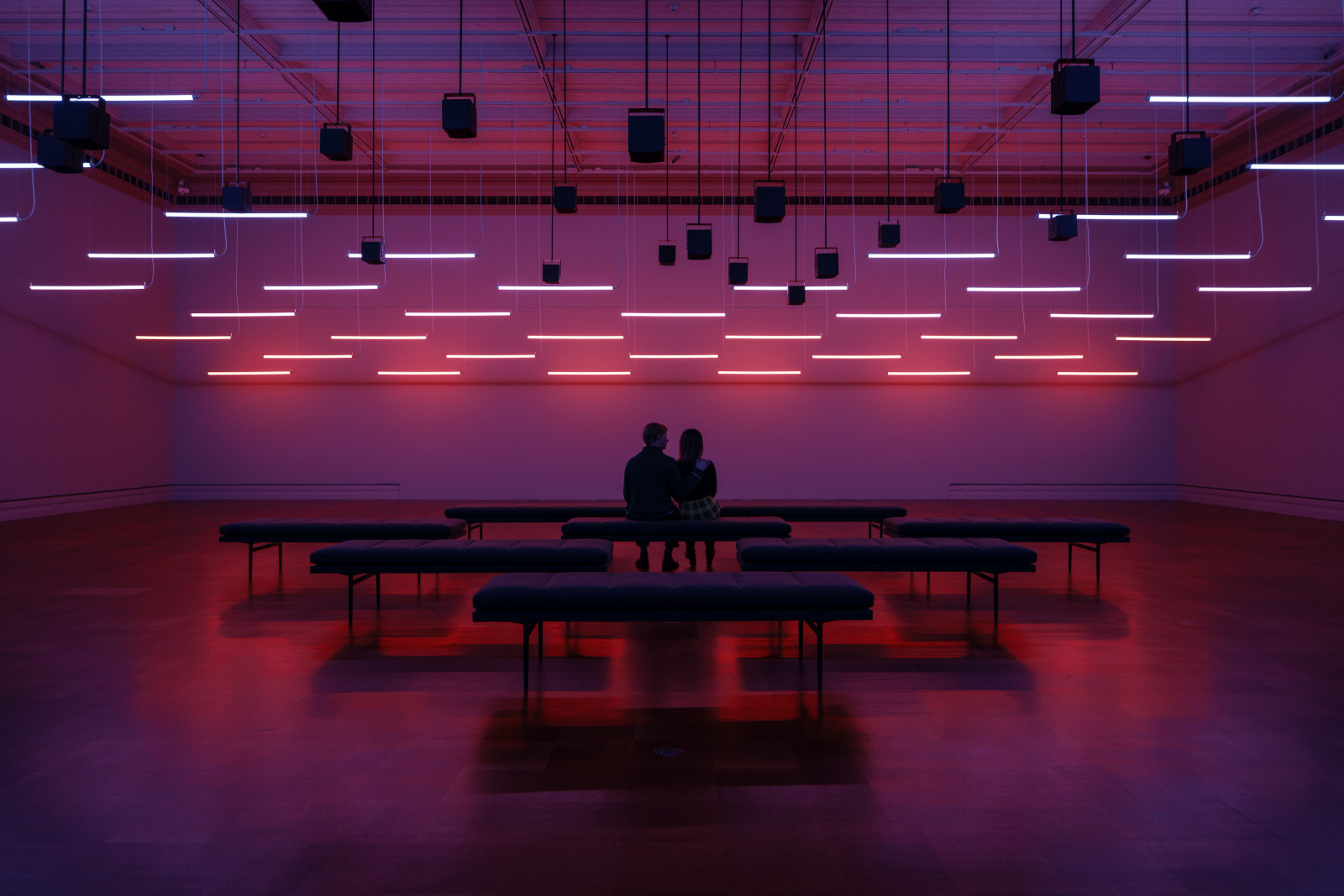Portrait Mask of a Mummified Young Man
Portrait Mask of a Mummified Young Man
Place of OriginEgypt, likely a necropolis Middle Egypt
Date2nd century CE
DimensionsH: 7 7/8 in. (20 cm.); Max L (eyeliner): 1 3/4 in. (4.5 cm); Max W (eye): 13/16 in. (2.0 cm); Thickness (eyeliner): 1/4 in. (0.6 cm)
MediumPlaster and paint with glass eyes. Eyes cast in open, one-piece molds; cut on all edges and polished on all exposed surfaces.
ClassificationMummies and Mummy Cases
Credit LinePurchased with funds from the Libbey Endowment, Gift of Edward Drummond Libbey
Object number
1961.27
Not on View
DescriptionA hollow plaster mummy mask representing the head of a young man. The mask is made of painted plaster over a linen lining. The face was once gilded, and traces of the gold remain. The subject has black, individually rendered strands of hair. The inlaid eyes are composed of opaque white glass for the sclera, a circular brown iris outlined in a darker color, and a large black pupil. The eyes are framed by prominent, opaque dark blue glass eyeliners that project outward from the face. A portion of the painted garment, decorated with gray-blue, yellow, and white stripes, is preserved behind the head. The mask shows evidence of being assembled from several pieces and has old repairs. An Arabic number, 658, is inscribed under the chin.
Label TextThe piercing gaze of this mask comes from expertly crafted glass, inlaid to give the deceased the magical ability to see in the afterlife. Opaque white, brown, and black glass form the lifelike eyes, while solid bars of deep blue glass create the dramatic cosmetic eyeliner, a feature of Egyptian art for millennia. These durable, watchful eyes ensured the young man’s senses were restored for eternity. This mask was created for a new kind of burial. Instead of being hidden in sealed tombs, mummies in Roman Egypt were often placed in accessible family mausoleums. This created a need for a permanent, idealized face that could be seen by visitors during commemorative rituals, keeping the deceased forever present in the world of the living.Published ReferencesKunstwerke der Antike, Münzen und Medaillen, Basel, May 13, 1961, lot 228.
Toledo Museum of Art Museum News, new series, vol. 5, no. 3, Autumn 1962, p. 52, repr.
"La Chronique des Arts," Supplement a la Gazette des Beaux-Arts, no. 1129, Fevrier 1963, p. 67.
Luckner, Kurt T., "The Art of Egypt, Part II," Toledo Museum of Art Museum News, vol. 14, 1971, p. 75, fig. 17.
Grose, David F., Early Ancient Glass: Core-formed, Rod-Formed, and Cast Vessels and Objects from the Late Bronze Age to the Early Roman Empire, 1600 B.C. to A.D. 50, New York, Hudson Hills Press in association with the Toledo Museum of Art, 1989, cat. no. 620, p. 360.
Peck, William H., Sandra E. Knudsen and Paula Reich, Egypt in Toledo: The Ancient Egyptian Collection at the Toledo Museum of Art, Toledo, Toledo Museum of Art, 2011, p. 88, repr. (col.) pp. 11, 88.
Exhibition HistoryToledo Museum of Art, The Egypt Experience: Secrets of the Tomb, 2010-2012.
Toledo Museum of Art, The Mummies: From Egypt to Toledo, February 3- May 6, 2018.
3rd Century BCE
26th Dynasty (664–525 BCE)
250-150 BCE
Workshop of the potter Nikosthenes
about 520 BCE
late 19th century

Membership
Become a TMA member today
Support TMA
Help support the TMA mission















